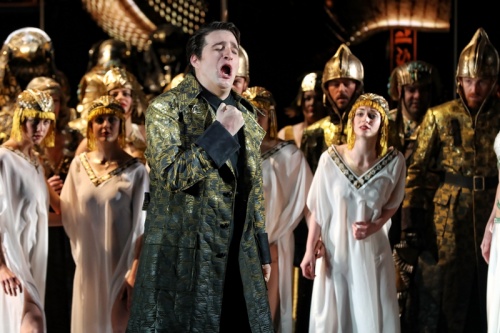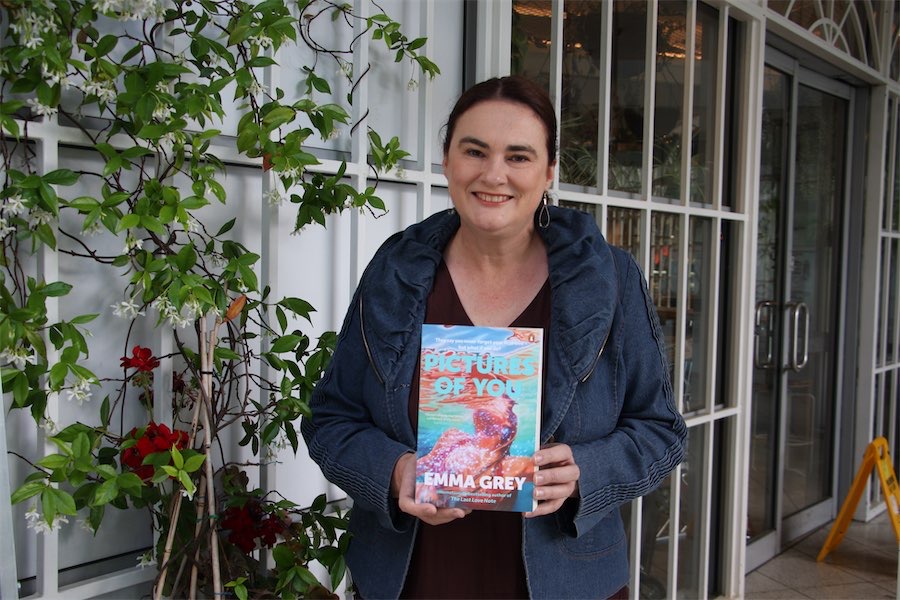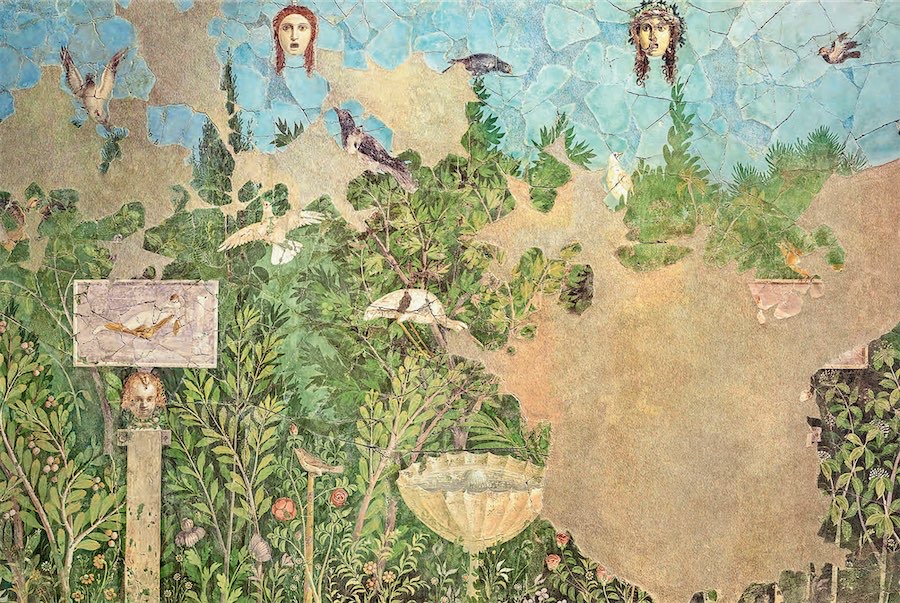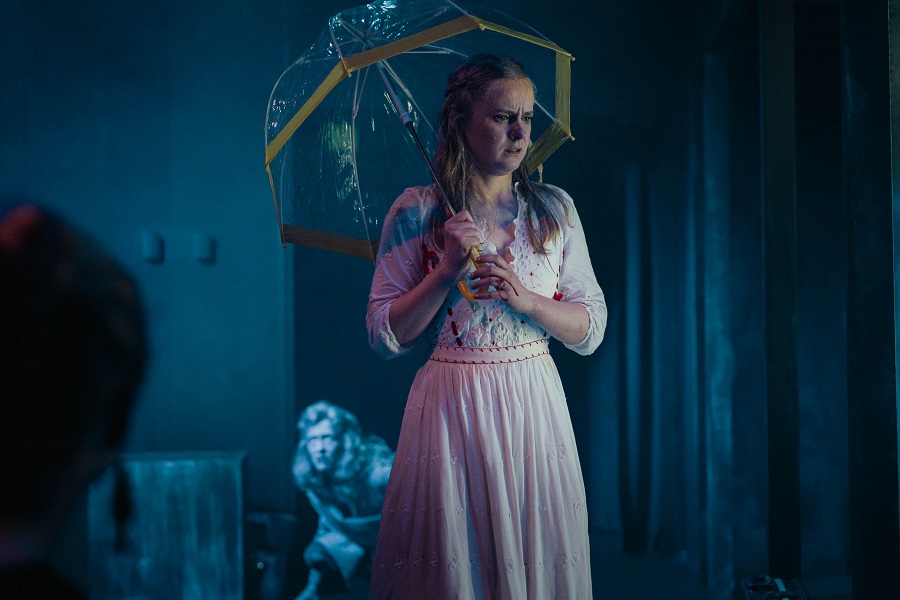
The large-scale screen imagery, which dominates this production, provides an object lesson in upstaging, in the sense that downstage actions involving the principal actors in the drama of “Aida” are largely upstaged by the sensational LED lighting effects and video projections hovering above, behind and around them.
Although contemporary design company, D-wok has worked extensively with Italian director Davide Livermore, it is clear that the use of digital technology to supplement conventional sets still has a long way to go, with the aesthetics yet to be determined.

Huge images on the LED screen conjure up a dream Ethiopian woman for hero Radamès (Italian tenor Riccardo Massi) with no resemblance to the ample American soprano Amber Wagner as the on-stage Aida. A strikingly 21st century image of the pregnant goddess Isis similarly dominates, creating a visual distraction.
During Aida’s ravishing Act I aria “Amor fatal” (Fatal love) red clouds raged, folde and unfold behind her – a brilliant visual image in itself, but repetitive.
Having said that this, the digital approach is a spectacular way of showing the palace of Pharaoh or an enclosing tomb, but it needs to be exercised in moderation. Recurrent super-sized images of naked male figures from a pharaonic frieze (but with movable arms) appear on the shape-shifting LED screens on which the digital imagery is projected.

In the final moments of the opera, however, the stage director and the digital direction are in perfect accord as the lavish colours and textures give way to a minimalist white – the void of death.
Surely the central feature of any opera is the singing and happily, this “Aida” is no disappointment. Wagner dominates even the red clouds when she stands centre stage and delivers her greatest arias to wild applause. Gabouri as the wounded Amneris hits her straps in the last act as she transformed from savage antagonist to prayerful survivor.
While the two female voices dominate, Massi asserts himself vocally from the outset with his romantic rendition of “Celeste Aida”. (Heavenly Aida)
But, like his two female counterparts, he was acting stereotypes. In a curious directorial decision, there was little physical contact between any of the principals. Aida and Radamès avoid each other even in their dying moments.
“Aida” is often viewed as a huge piece of public opera, but at its heart it is a three-way conflict between Aida, Radamès and Amneris, so a modicum of acting might have helped. A more convincing scene is that in which Aida and her father Amonasro (Warwick Fyfe) sing the Act III duet, “Ciel, mio padre!”(Heaven my father) with great animation.
Large crowd scenes are among director Livermore’s strengths and his costume designer Gianluca Falaschi supports his intentions with spectacular costumes for Pharaoh, guards, palace maids, semi-naked dancers in a series of tedious choreographic episodes and indeed everybody but Aida and Radamès, the latter clad inexplicably in a full length overcoat.
Apart from the breathtaking control of Wagner, who overcomes need for acting with her sheer power, notably in the Act III “O Patria Mia”, (O My Country) the stars of this production are undoubtedly the Opera Australia Chorus, who ranged from dazzling fortissimo to the quietest imaginable Act I hymn to the god Phtha, “Possente Phtha” (O mighty Phtha). This must be one of the world’s greatest operatic choruses and “Aida” allows them full scope.
As the opera company and its creative team move into new-era visuals, it is important for them work out what it is that they want from a production, and there will be many changes. It is safe to predict that the technology of this “Aida” will be quickly superseded.
Singing, music, acting and visuals all combine make opera the powerful hybrid art form it is, but it is essential to get the priorities right.
Who can be trusted?
In a world of spin and confusion, there’s never been a more important time to support independent journalism in Canberra.
If you trust our work online and want to enforce the power of independent voices, I invite you to make a small contribution.
Every dollar of support is invested back into our journalism to help keep citynews.com.au strong and free.
Thank you,
Ian Meikle, editor




Leave a Reply